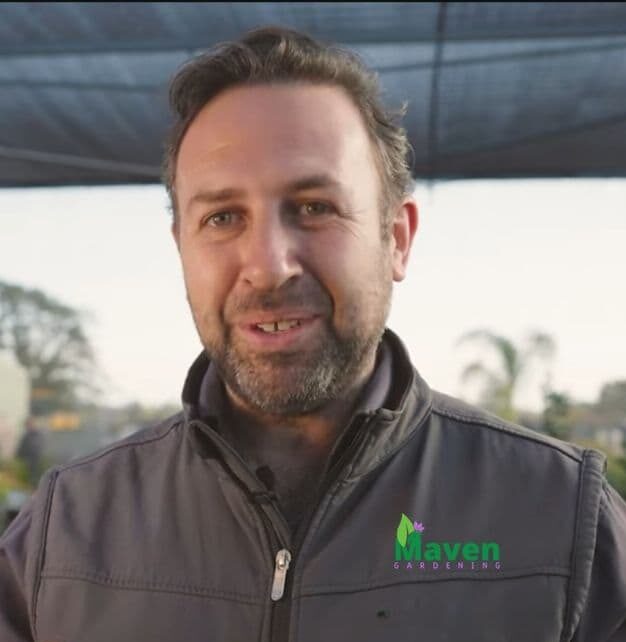How to Grow Hydroponic Tomatoes Throughout the Year?
The hydroponic tomato growing system is changing how we think about farming and fresh food. This simple farming method uses space effectively and offers a sustainable answer to modern agricultural issues.
Furthermore, as we discuss hydro-grown tomatoes more, you’ll see how this method makes vine fruits taste better all year. Importantly, this remains true regardless of outdoor weather conditions.
Benefits of Growing Tomatoes Hydroponically
Space-Efficient Cultivation
Hydroponic systems are suitable for city dwellers or those with limited space because they require little land to grow plants. They use vertical space, allowing you to plant more plants per square foot than soil-based methods.
Hydroponics simplifies indoor gardening, enabling you to grow tomatoes indoors and enjoy fresh, juicy fruits no matter where you reside.
Pest and Disease Control
Soil-less tomato farming has a lower risk of pests and diseases, especially in controlled indoor environments. It allows you to grow healthy, natural food, avoid tomato problems, use fewer pesticides, and keep the environment safe. This benefit appeals to health-conscious consumers and aligns with sustainable farming practices.
Rapid Growth and Increased Yields
Since vibrant, succulent red fruit gets the right amount of water and nutrients straight through its roots, it grows faster and produces more. This effective method of delivering nutrients speeds up growth and boosts fruit production. It also ensures a steady supply of tomato berries throughout the year.
Essential Equipment for Hydroponic Tomato Cultivation
To start your hydroponic journey, you’ll need some essential tools. Here are some things that will help you succeed:
Grow Lights
Choosing the right grow lights is crucial. People like LED grow lights because they work well and have a long lifespan. They provide a broad light spectrum that maximizes plant growth and are energy-efficient for indoor use.
LED Grow Lights: LED grow lights mimic certain wavelengths of sunlight, providing indoor tomatoes with the light they need for photosynthesis and chlorophyll production.
Energy Efficient: LED lights use less power, lowering utility bills and carbon footprints.
Long Lifespan: LED lights are an excellent choice for your indoor hydroponic setup because they last a long time.
Reliable Water Filtration System
Excellent water quality is critical to the success of water gardening. A reliable filtration system guarantees your vine fruits receive pure, healthy water, free from harmful impurities that could stunt their growth.
Removal of Contaminants: Eliminate harmful substances from the water to ensure it is safe for growing plants.
Consistent Nutrient Delivery: Make sure the water in your system is right for plants to absorb nutrients.
How to Choose the Right Hydroponic Tomato Types
The first step is picking the right tomato types for a water-cultured garden. Luckily, determinate and indeterminate tomatoes do well in hydroponic setups, though each has its advantages.
Determinate Varieties:
Perfect for Compact Spaces: These petite plants maintain their size, ensuring effortless management in smaller setups.
Favorite Sauce Tomatoes: Many popular types of tomato berries used for making sauce are available, such as Celebrity, San Marzano Nano, and Amish Paste.
Simultaneous Harvest: Determinate plants usually bear all fruit at once, which makes harvesting easier.
Indeterminate Varieties:
Continuous Harvest: These vine plants keep growing and producing fruit, so fresh red fruits are always available. Cherry tomatoes are a well-known example of variable varieties.
Larger Plants: Indeterminate types need more room and support but work best in larger nutrient-film systems.
Disease-resistant Types:
Selecting disease-resistant tomato varieties is a key strategy for successful plant production. These varieties are less susceptible to common diseases, resulting in healthier plants, increased yields, and potentially less pesticide use.
Sunny, Mt. Spring, Sunny Start, Daybreak, Mt. Fresh, Sun Leaper, Celebrity, Floralina, Jet Star, Merced, Sunmaster, and Carolina Gold are all disease-resistant types you might want to try.
Think about Cherry Grande and other types that can handle the heat for cherry tomatoes.
Setting Up Your Indoor Tomato Hydroponics
Setting up your indoor hydroponic setup before growing tomatoes is imperative. To begin, follow these steps:
Choosing a Suitable Location
Space Considerations: Ensure the system and plants have enough space to grow.
Accessibility: Choose a place that is easy to reach for regular upkeep.
Installing the Hydroponic System
System Types: Choose a system that fits your space and skill level, from nutrient film techniques to deep water culture.
Professional Help: Consult an expert hydroponics installer if you need help setting everything up.
Organize Your Equipment and Tools
Efficiency: Keep your tools organized for easy access. It includes nutrient solutions, pH meters, and pruning tools.
Safety: Ensure electrical components are safely installed and kept out of the way to prevent accidents.
Hydroponic tomato nutrient solutions and watering
To ensure hydro-grown tomatoes thrive, you must water and feed them with the proper nutrients.
Balanced Nutrients for Tomatoes Hydroponic
Essential Nutrients: Solanum fruits need an excellent mix of nitrogen, phosphorus, and potassium micronutrients.
pH levels: Keep your nutrient solution pH between 5.5 and 6.5 for maximum nutrient uptake.
Watering Schedule
Consistency: Regular watering ensures even nutrient distribution.
Monitoring: Check the water level often and change your schedule based on the plant’s growth stage and the weather.
Hydroponic tomato cultivation: lighting and climate control
To grow properly, you need precise lighting, temperature, and humidity. For a successful controlled environment garden, here’s how to make the most of these factors:
LED Grow Lights: The Heart of Indoor Garden
LED lights generate less heat and consume minimal energy. Additionally, full-spectrum LED lights are effective because they mimic or even outperform natural sunlight, which makes them suitable for indoor-grown tomatoes.
Temperature and Humidity Control
Ideal Conditions: These salad fruits are suitable for temperatures between 65°F and 75°F (18°C and 24°C). In addition to temperature, humidity should be between 40% and 60%.
Regulation Tips: Use a thermostat and a hygrometer to monitor and adjust these conditions.
Air Circulation
Importance: Proper air flow keeps plants healthy and strengthens plant roots.
How to Achieve: Employ small fans to maintain airflow, ensuring gentle circulation without directly impacting plants.
Pruning and Hydro-Tomato Plant Management Techniques
Properly managing hydro-grown tomato plants is crucial for maximizing yields and healthy growth.
Regular Pruning
Why Prune: Pruning gives the plant shape, boosts airflow, and boosts fruit re-production.
Method: Trim off fruitless stems and leaves, especially those near the plant base.
Support Structures
Necessity: Tomatoes, especially indeterminate types, need something to hold them up as they grow.
Options: To keep your plants stable and supported, you can use poles, cages, or trellises.
Monitoring Plant Health
Regular Checks: Check your plants often for signs of illness, nutrient deficiencies, or pest infestations.
Action: Adjust nutrient amounts or use organic pest control methods to quickly and correctly solve nutrient-film tomato problems.
Harvesting Your Hydro Tomato
Timing is crucial. Harvest these love apples when they reach optimal firmness.
Technique: Twist the fruit gently or use a sharp knife to avoid damaging the plant.
Mature Color Stage
Identification: Recognize your vine fruit variety’s mature color. It could range from a rich, deep red to a vibrant yellow or even an elegant purple.
Sign of Ripeness: The mature color stage is a reliable indicator of peak flavor and nutritional content.
Proper Harvesting Technique
Method: Cultivate a gentle yet secure grip on the fruit, then twist it gently to proceed.
Frequent Harvesting: Harvesting regularly encourages the plant to produce more fruit.
Storage Tips
Temperature: Store at room temperature for delicious flavor. Avoid refrigeration, as it diminishes taste and texture.
Shelf Life: Properly stored, hydroponic tomatoes can last about a week, depending on ripeness at harvest.
Troubleshooting Common Hydroponic Tomato Problems
It can be satisfying to grow tomatoes hydroponically, but like any farming process, there are drawbacks. Here are some common issues with your soilless Solanum fruit plant:
Yellowing Leaves
Nutrient Imbalance:
Yellowing is often a sign of insufficient nutrients, usually magnesium or nitrogen. Therefore, ensure your nutrient solution is balanced.
Watering Issue: Too much or too little water stresses plants. Hydroponics requires steady water flow.
Lighting: Insufficient light can cause yellow leaves. Ensure that your plants receive sufficient light.
Wilting
Root Health: Make sure your tomato plant roots aren’t rotting, especially in hydroponics. It might happen if the water isn’t clean or doesn’t get enough airflow.
Temperature Stress: Extreme temperatures can cause wilting. Ensure that the weather is stable and suitable for growing these hydroponic salad fruits.
Pest Problems
Prevention: To mitigate this issue, inspect your plants regularly.
Natural Solutions: Use natural methods, like neem oil, to eliminate pests or bring in healthy bugs.
Pro Tip
Keep a close eye on your plants. A healthy water-based tomato garden requires early detection of problems.
Final Thoughts
To sum up, growing hydroponic tomatoes is an eco-friendly and efficient way to get fresh food all year. With proper setup, care, and attention, you can harvest bumpers efficiently. Regular maintenance and monitoring are crucial to successful nutrient-film tomato growth.
Frequently Asked Questions
What are the benefits of growing tomatoes hydroponically?
Hydroponic tomatoes grow faster, produce more, and are less likely to get diseases. Consequently, they work well in cities where room is limited.
How do I select suitable tomato types for hydroponic cultivation?
Choose determinate varieties for proliferating plants or indeterminate types for fruit plants. You may also opt for disease-resistant varieties.
What essential equipment is needed for hydroponic tomato cultivation?
You will need lights, a water filter, nutrient solutions, and suitable pots or nets for growing.
My hydroponic tomatoes are having problems. What should I do?
Regular vigilance for signs of nutrient deficits, pests, and diseases is essential. Consequently, you may need to adjust your care routine to deal with these problems.
Why is lighting so crucial in hydroponic tomato growing?
If your tomatoes aren’t in the sun, make sure they still get plenty of light so they can grow well and produce lots of fruit.
Moreover, growing love apples in hydroponic systems is a process of learning and adapting as you proceed. Each problem you face is a chance to improve your gardening and learn more. Ultimately, it will be a pleasure to watch your efforts yield tasty results!

Meet Milan Cole, your urban gardening pro!
Milan Cole, chief content writer at Maven Gardening and an urban gardening expert, is passionate about helping city dwellers cultivate their green thumbs. Armed with extensive horticultural knowledge, Milan provides practical advice for overcoming urban gardens’ challenges, like limited space, water scarcity, and reduced sunlight.
His expertise extends beyond traditional methods, encompassing innovative approaches like hydroponic and aquaponic systems and sustainable gardening practices. Milan skillfully adapts these techniques to urban environments, considering factors like pollution and climate change.
In his clear and concise writing, Milan offers actionable solutions for anyone wanting to bring life to an urban space. He shares valuable insights into growing herbs in tight spaces, maximizing the potential of window boxes, and transforming even the most miniature balconies into thriving green oases.
Milan’s guidance is straightforward and practical, making it ideal for anyone looking to cultivate their own urban garden, regardless of prior experience.
Join Milan Cole on your journey to metropolitan Eden!




